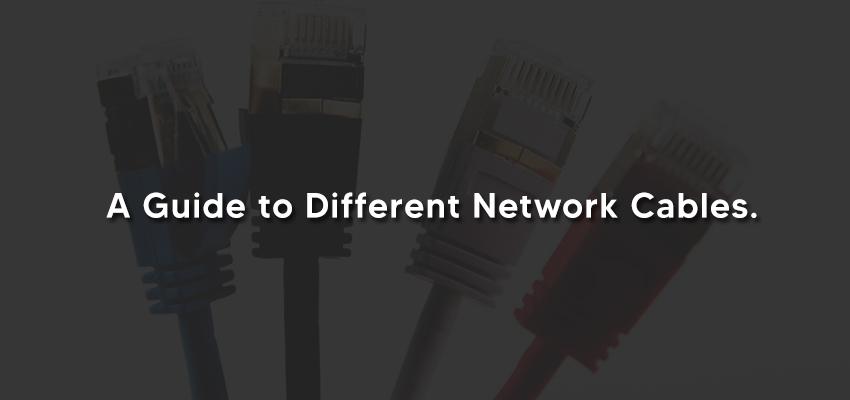
A Guide to Different Network Cables
Posted Oct. 6, 2020, 7:09 a.m. by Emil S.There were many breakthroughs in the 21st century. Advances in medicine, architecture, transportation, and technology were discovered and developed. Technology is the scientific branch that made a mark in society. Complex machines like computers are at its forefront. They rely on a cabling system in transferring data, and each designed for a specific purpose. Here are the network cables that you will need for your devices.
1. Coaxial Cables
This cable has predated the modern computer for about 50 years. An English mathematician invented it in 1880. The purpose was for the development of telegraph transmission lines. It’s the cable used to connect home antennas to TV sets. It’s also a standard cable for connecting to 10 Mbps Ethernet cables.
The 10 Mbps Ethernet cable became important in the 1980s and '90s when TV programming was at its peak. There were two types of lines used: the thicknet (10BASE5 standard) and the thinnet (10BASE2 standard) made of an inner layer of copper wiring of different thicknesses.
It's covered by insulation and another kind of shielding. It sometimes causes difficulty for the cable technicians and network administrators since it's their job to install and maintain both the thicknet and thinnet.
2. USB Cables
The USB (Universal Serial Bus) cable is the type that connects your computer to an external device. The kind made with a connection port like a mouse or keyboard or your mobile phone. A dongle or a particular network adapter can also connect an Ethernet cable to a USB port. USB cables have a unique twist-pair wiring feature.
3. Twisted Pair Cables
This cable type came out in the 1990s. It became the standard cable used by the Ethernet. It's a network cabling system for carrying internet signals, beginning with 10 Mpbs (Category 3 or 10BASE-T and afterward, with improved versions for 100 Mpbs (Category 5, Category 5e, 100BASE-TX). Then with higher speeds of 10 Gbps (10GBASE-T). This cable has eight wires coiled together in pairs to lessen electromagnetic interference.
There are two kinds of industry-standard twisted-pair cables:
- First is the UTP (unshielded twisted pair). Modern Ethernet cables use it because of its lower price.
- STP (shielded twisted pair). It is for FDDI (Fiber Distributed Data Interface) and other types of networks.
4. Serial and Parallel Cables
In the 1980s and '90s, personal computers didn't have the Ethernet capability. USB wasn't invented yet. Serial and parallel cables were used for computer-to-computer networking. Now, these types of wires are no longer in use. Lines like the null modem cables enabled the transfer of data at speeds between 0.115 and 0.45 Mbps. It can happen by connecting two computer serial ports.
5. Fiber Optics
Fiber optic network cables are different from the others. The reason is that it uses light pulses and strands of glass to transmit electrical signals, instead of the usually insulated metal wires. These are useful in WAN (wide area network) installations. It's present in places where there are outdoor or long-distance cables like office buildings where there is high communication traffic.
There are two kinds of industry-standard fiber optic cables:
- Single-mode cables (100BaseBX standard) is for long-distance telecommunication network companies to have higher bandwidth capacity.
- TheMultimode cables (100BaseSX standard). It’s for local networks because of their cheaper cost.
6. Crossover Cables
This cable's primary function is to connect two of the same devices. Similar to two network switches or two personal computers. One example is null modem cables. It's used to connect old model computers. On the outside, this cable type looks the same as ordinary cables. You can distinguish them by a color code showing on the cable's end connector. Manufacturers do this to set themselves apart from the others. These cable types are now obsolete. The reason is home networks have a built-in crossover capability in the router.
Other Types of Network Cables
Patch cables are a term referring to any line used temporarily for any network or device. Fiber optic, coax, and twisted pair is often used as patch cables. The home standard electrical wiring is used for power line network systems—the kind used for data communication by plugging adapters into wall sockets. Now you are aware of the different cables. This knowledge will help you in every case or situation where technology is present. Any technology-based learning is key to surviving in today's digital world.
